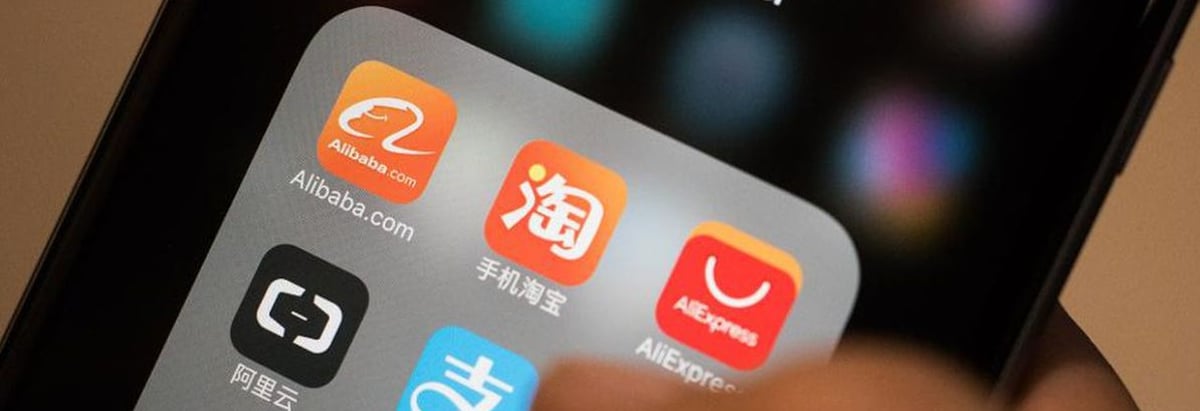Is Alibaba Group Holding Limited's (NYSE:BABA) ROE Of 17.81% Sustainable?

With an ROE of 17.81%, Alibaba Group Holding Limited (NYSE:BABA) outpaced its own industry which delivered a less exciting 10.32% over the past year. However, whether this above-industry ROE is actually impressive depends on if it can be maintained. This can be measured by looking at the company’s financial leverage. With more debt, BABA can invest even more and earn more money, thus pushing up its returns. However, ROE only measures returns against equity, not debt. This can be distorted, so let’s take a look at it further. See our latest analysis for Alibaba Group Holding
What you must know about ROE
Return on Equity (ROE) is a measure of Alibaba Group Holding’s profit relative to its shareholders’ equity. It essentially shows how much the company can generate in earnings given the amount of equity it has raised. Investors that are diversifying their portfolio based on industry may want to maximise their return in the Internet Software and Services sector by choosing the highest returning stock. But this can be misleading as each company has different costs of equity and also varying debt levels, which could artificially push up ROE whilst accumulating high interest expense.
Return on Equity = Net Profit ÷ Shareholders Equity
ROE is measured against cost of equity in order to determine the efficiency of Alibaba Group Holding’s equity capital deployed. Its cost of equity is 11.45%. This means Alibaba Group Holding returns enough to cover its own cost of equity, with a buffer of 6.36%. This sustainable practice implies that the company pays less for its capital than what it generates in return. ROE can be broken down into three different ratios: net profit margin, asset turnover, and financial leverage. This is called the Dupont Formula:
Dupont Formula
ROE = profit margin × asset turnover × financial leverage
ROE = (annual net profit ÷ sales) × (sales ÷ assets) × (assets ÷ shareholders’ equity)
ROE = annual net profit ÷ shareholders’ equity
Basically, profit margin measures how much of revenue trickles down into earnings which illustrates how efficient the business is with its cost management. Asset turnover reveals how much revenue can be generated from Alibaba Group Holding’s asset base. And finally, financial leverage is simply how much of assets are funded by equity, which exhibits how sustainable the company’s capital structure is. We can assess whether Alibaba Group Holding is fuelling ROE by excessively raising debt. Ideally, Alibaba Group Holding should have a balanced capital structure, which we can check by looking at the historic debt-to-equity ratio of the company. The ratio currently stands at a sensible 24.99%, meaning Alibaba Group Holding has not taken on excessive debt to drive its returns. The company is able to produce profit growth without a huge debt burden.
Next Steps:
While ROE is a relatively simple calculation, it can be broken down into different ratios, each telling a different story about the strengths and weaknesses of a company. Alibaba Group Holding’s ROE is impressive relative to the industry average and also covers its cost of equity. Its high ROE is not likely to be driven by high debt. Therefore, investors may have more confidence in the sustainability of this level of returns going forward. Although ROE can be a useful metric, it is only a small part of diligent research.
For Alibaba Group Holding, there are three essential aspects you should further examine:
1. Financial Health: Does it have a healthy balance sheet? Take a look at our free balance sheet analysis with six simple checks on key factors like leverage and risk.
2. Valuation: What is Alibaba Group Holding worth today? Is the stock undervalued, even when its growth outlook is factored into its intrinsic value? The intrinsic value infographic in our free research report helps visualize whether Alibaba Group Holding is currently mispriced by the market.
3. Other High-Growth Alternatives : Are there other high-growth stocks you could be holding instead of Alibaba Group Holding? Explore our interactive list of stocks with large growth potential to get an idea of what else is out there you may be missing!
If you're looking to trade Alibaba Group Holding, open an account with the lowest-cost platform trusted by professionals, Interactive Brokers.
With clients in over 200 countries and territories, and access to 160 markets, IBKR lets you trade stocks, options, futures, forex, bonds and funds from a single integrated account.
Enjoy no hidden fees, no account minimums, and FX conversion rates as low as 0.03%, far better than what most brokers offer.
Sponsored ContentNew: Manage All Your Stock Portfolios in One Place
We've created the ultimate portfolio companion for stock investors, and it's free.
• Connect an unlimited number of Portfolios and see your total in one currency
• Be alerted to new Warning Signs or Risks via email or mobile
• Track the Fair Value of your stocks
Have feedback on this article? Concerned about the content? Get in touch with us directly. Alternatively, email editorial-team@simplywallst.com
Simply Wall St analyst Simply Wall St and Simply Wall St have no position in any of the companies mentioned. This article is general in nature. We provide commentary based on historical data and analyst forecasts only using an unbiased methodology and our articles are not intended to be financial advice. It does not constitute a recommendation to buy or sell any stock and does not take account of your objectives, or your financial situation. We aim to bring you long-term focused analysis driven by fundamental data. Note that our analysis may not factor in the latest price-sensitive company announcements or qualitative material.
About NYSE:BABA
Alibaba Group Holding
Through its subsidiaries, provides technology infrastructure and marketing reach to help merchants, brands, retailers, and other businesses to engage with their users and customers in the People's Republic of China and internationally.
Very undervalued with excellent balance sheet.
Similar Companies
Market Insights
Community Narratives




